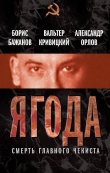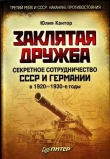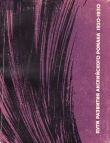
Текст книги "Машины зашумевшего времени"
Автор книги: Илья Кукулин
Жанры:
История
,сообщить о нарушении
Текущая страница: 34 (всего у книги 34 страниц)
Summary
MACHINES OF NOISY TIME: HOW EARLY SOVIET MONTAGE BECAME A METHOD OF UNOFFICIAL ART
Abstract
This book examines shifts in the meaning of montage in different historical situations and in various artistic media, including literature, cinema, theater, and visual arts. Its scope includes literature and art of Soviet Russia (both official and unofficial), Germany, France, and the United States from 1910 to the 2010s. While this book does not provide a cohesive historical sketch, it delivers comparative studies on artists whose works problematize common understandings of the avant-garde in art history.
This study argues that different types of artistic montage correspond to different conceptions of history, dividing the history of montage aesthetics and techniques into three periods: (1) constructing, (2) post-utopian, and (3) historicizing or analytic montage. This book intends to demonstrate how the revolutionary montage aesthetics of the 1920s was reinterpreted and adapted for critical analysis of utopian consciousness in unofficial literature and art of the 1960s and 1970s. This change became possible because unofficial art, unlike Soviet socialist realism, was connected with the experiments of European and American radical modernism and postmodernism.
The main points of this book can be summarized as follows.
Montage as a specific aesthetic method emerged in the very beginning of the twentieth century. Beginning in the 1900s and continuing throughout the 1920s, expressive, «sharp» montage – not only in cinema but also in visual arts and literature – was implemented as a method for the dynamic representation of contemporaneity. Montage produced an aesthetic portrayal of contemporaneity by depicting it as a space of emerging utopia/dystopia, full of conflicts and antagonistic oppositions. Moreover, «montage modernity» acquired the status of a totally new historical period, anthropologically and aesthetically different from all previous epochs. The aesthetics of montage was based on the experience of psychological trauma originating from urbanization, globalization (including the extensive contact of Western artistic circles with the art of China and Japan), WWI, and the subsequent civil wars in Russia and Germany. This book suggests that sharp montage was an element not only of avant-garde art, but also of the diverse movements of modernism and, later, postmodernism.
In the USSR of the 1920s, montage aesthetics acquired the features of a «grand style.» The difference between «present-day society» and the previous condition of society and culture was ideologized and politicized. In Soviet productions, the Bolshevik party and «progressive» men and women were dubbed the «avant-garde of humanity,» and were represented as the leading force in creating a new historical reality. This creation was represented – in Sergei Eisenstein’s films, Boris Pilniak’s novels, Gustav Klutsis’ photo-collages, and Sergei Tretiakov’s theater plays – as a creative violence that overcomes the dark, impersonal violence of non-regulated history. The aesthetics of montage was a tool to either glorify or stoically accept this violence. Stoical acceptance was chosen by, among others, Yuri Tynianov and Artem Vesioly. El Lissitsky’s 1920s works reveal the hidden mystical and occult sources of the «montage representation of history,» and undermine the common understanding of avant-garde art as «atheist» and «aggressive.»
Several times, Soviet montage was interpreted as a radicalization of Western European and pre-revolutionary Russian (e.g. Andrey Bely) montage aesthetics. However, Soviet montage also strongly influenced left-wing artists in various countries: the image of history as a dynamic-conflicting becoming corresponded with leftist worldviews, and with Marxist and socialist ones first of all.
Meanwhile, different versions of montage aesthetics developed in Western Europe and in the USA. Take, for example, the work of Alfred Döblin, Erwin Piscator, Bertolt Brecht, and Walter Ruttmann in Germany; Karel Čapek in Czechoslovakia; John Dos Passos in the USA; James Joyce in Ireland and France; and Ezra Pound in Great Britain. Not all of these artists were connected with socialist circles: Čapek was a liberal, Joyce’s political opinions were also more or less liberal, and Ezra Pound was, as is well-known, close to Italian fascism.
«Epic Polyphonic Political Art» (EPPA) was the most important montage movement formed during the twenties and early thirties. This movement includes the films of Sergei Eisenstein and Dziga Vertov, the plays of Bertolt Brecht and Vsevolod Vishnevskii, the theater performances directed by Erwin Piscator and Vsevolod Meyerhold, and, as strange as it may seem, the Jefferson Cantos by Ezra Pound. The most common EPPA plot featured a major historical turning point and an approaching anthropological transformation. EPPA existed in the USSR, Central Europe, and the USA. Hence, this movement functioned as an interactive space between Soviet culture and Western left (and even non-left) artistic movements of the 1930s.
Some authors living in the USSR transformed montage’s meaning in their texts in order to critically revisit the Bolshevik image of history, and to resist state-controlled propaganda. Such texts – including prose works by Lev Luntz, Mikhail Bulgakov, and Daniil Kharms – were kept from the Soviet public, or were «written for the drawer,» without the expectation of receiving the censor’s approval. Such texts and works of art are designated non-censored art, to utilize a term that has been accepted in Russian underground criticism since the 1970s.
The image of a «creative violent modernity» was significantly transformed during the 1930s in Western Europe, North America, Nazi Germany, and the USSR; however the shifts in this image had different sources and varied in their results. In Western Europe and North America, the collective feeling of an impending social crisis, generated by the rupture of the social order after WWI, became weaker or more habitual. The growth of mass culture, as well as the collective rush towards emotional escapism in the face of WWII’s approach, prompted the expansion of comforting melodramatic plots in cinema and literature. These plots did not require sharp montage; on the contrary, such stories inclined writers and directors to use even-tempered, non-conflicting styles of narrative and/or portrayal.
In Nazi Germany, montage devices, which propagandist media associated with «left» and «degenerate» (i.e. «Jewish») art, became forbidden. Artists who used montage techniques were often forced to leave the country. However, several artists became the creators of the «Nazi avant-garde,» which combined sharp montage and pseudo-neoclassical aesthetics, as in the work of notorious film director Leni Riefenstahl.
At the same time, during the 1930s Soviet authorities initiated a radical cultural and political turn toward «national-Bolshevism» (to use David Brandenberger’s understanding of this term). This shift was marked by the emergence of a new image of Soviet contemporaneity as the «space of triumph» (rephrasing Mikhail Ryklin’s term «the spaces of jubilation»), and not as the launching pad for utopia. In its self-representation, the USSR turned away from a project aimed at a utopian future for all mankind, and instead toward the image of a flourishing but isolated empire that had already accomplished everything desired. Under these new circumstances, melodramatic plots (demonstrating Soviet interpretation of Hollywood style), encouraged the «indigenous» weakening of montage aesthetics. These plots sought to emotionally mobilize the audience, and to represent neo-imperial Bolshevik ideology as natural, kind, and inevitable. However, the futuristic connotations of montage techniques were revived in the aesthetics of Soviet pavilions for international exhibitions; former avant-garde artists were among the designers of these pavilions, including Nikolai Suetin, who, as a student, worked closely with Kazimir Malevich.
The only artists who maintained a taste for montage in Western European and American literatures of the late 1930s and 1940s were those who interpreted the historical period before and during WWII as transitional or catastrophic, rather than progressive: Döblin, Brecht, Dos Passos, Čapek.
In Russian culture, new meanings of montage were further developed in non-censored literature. Here, prose works by Arkadii Belinkov and unpublished verses by Vladimir Lugovskoy and Daniil Andreev are discussed. The revival of montage in Russia was closely associated with unofficial discussions on the «neo-baroque» – a style that was conceived by Ilya Ehrenburg and Arkadii Belinkov as a restoration of radical modernism in the context of WWII, confronting 1930s socialist realism.
In evaluating the evolution of twentieth century Western art, scholars such as Vladimir Paperny and Boris Groys argue that avant-garde and socialist realism/totalitarian art were the unified aesthetic systems. If this is true, only one question remains: was the avant-garde a logical predecessor of socialist realism, or did socialist realism emerge as the total repressive negation of the avant-garde? As it is argued in this book, the relationship between the avant-garde and socialist realism is more complicated and nonlinear than previously understood. In the late 1930s and 1940s, the techniques of montage were transferred into a new context, and there they survived. Moreover, careful examination of the aesthetic movements of the 1910s-1940s gives reason to reject the essentialist opposition of the avant-garde and socialist realism.
During late 1930s and 1940s, post-utopian montage gradually came into being in Western cultures and in Russian non-censored art. Now, montage did not point to a desirable future, nor did it depict contemporaneity as a battlefield of conflicting forces. Rather, the main task of post-utopian montage was to represent history as a series of ruptures, fragmenting and reordering a private and/or social experience. Even though Brecht and Eisenstein maintained hope for a progressive future, their works nevertheless acquired the features of post-utopian montage.
A flourishing of montage aesthetics once again took place during the late 1950s and 1960s, both in the «First World» and in the USSR. However, this montage had a new meaning: much more than before, it was post-utopian and guided by the problems of (artistic) language, mimicking in technique the peculiarities of different types of human perception. American conceptual art of the early 1960s was a prominent example of this trend, as well as the films shot at the end of the 1960s by the French radical left Dziga Vertov Group, which included Jean Luc Godard. In the USSR, montage was revived even in official art movements, adapting to reshape Soviet society; this reshaping, as it is possible to demonstrate, was conceived by post-Stalin political elites of the late 1950s and early 1960s.
Montage in literature and film became a powerful tool of critiquing utopian projects. Originally, this aesthetic move was based on engagement with the trends of the 1920s, and on the resumption of «revolutionary modernism.»
However, in the 1970s, montage styles that grappled with the 1920s ceased to be regarded as productive and foundational for new artistic movements. Authors and artists of the 1970s no longer took up the debates of the 1920s, but rather those of their immediate predecessors: the artists and authors of the 1960s. Hence, 1920s montage became part of the history of art, not art’s «yesterday.»
The next development in montage aesthetics can be understood as analytic or historicizing montage, which reveals how contemporaneity has ceased to function as the synchronism of conflicting forces. The concept of a united but contradictory «present-day moment» (as Hans Ulrich Gumbrecht describes it in In 1926: Living on the Edge of Time) gives way to the notion of a meeting point of historically heterogeneous images and discursive practices, mutually alienated from one another in personal and/or collective memory due to the historical traumas of the twentieth century.
I discuss the development of historicizing montage by comparing in detail the texts and aesthetic methods of two coeval but totally different Russian writers: Alexander Solzhenitsyn (1918–2008) and Pavel Ulitin (1918–1986). While Solzhenitsyn’s works and life are well known, Ulitin’s works did not become part of any curriculum in Russia or in the West. Ulitin was the most aesthetically radical Russian writer of the 1950s–1970s. I compare his essays and collage books with cut-ups by William Burroughs and Brion Gysin, analyzing their parallels.
The final chapter is focused on the transformations of montage during the 2000s and 2010s. As this study aims to show, these trends are caused by the development of new media (including Web 2.0), and by changes in the historical imagination of artists. Here I analyze digital narratives in blogs, fragmentation experiments in popular literature and cinema (e.g. the novel Cloud Atlas by David Mitchell and its film adaptation by Tom Tykwer and Lana and Andy Wachowsky), and linguistic ruptures in contemporary Russian poetry.









